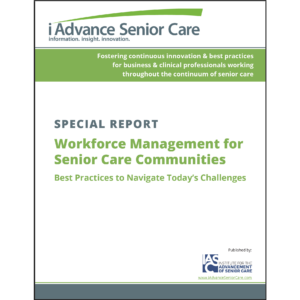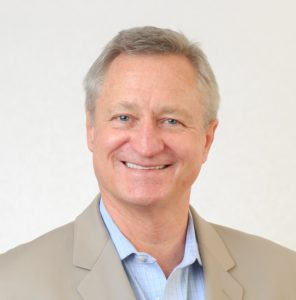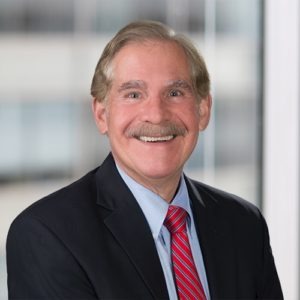Successful Edenization Through Education
| Successful Edenization through education Suggestions for encouraging LTC staff to embrace the change of the Eden Alternative BY JACK L. STEINER, CEAN EPPELHEIMER, AND MARLA DEVRIES |
| In the December 2003 issue of Nursing Homes/Long Term Care Management, an article by Bethany G. Sampsell chronicled one LTC facility’s experience with the Eden AlternativeÖ. The article, “The Promise, Practice, and Problems of the Eden Alternative,” described the facility’s struggle to achieve the fullest possible benefit from the process of Edenization. In response to that article, we offer suggestions on how to introduce the Eden Alternative to a long-term care facility using an approach developed by BEAM (Bringing the Eden Alternative to Michigan), an organization which began as a coalition of senior advocacy groups, providers, people from government, and regulators who were frustrated with the lack of progress in care and services to our elders. The group also realized that punitive regulations did not contribute to improving quality outcomes. The Eden Alternative came to Michigan in January 1998 when Dr. William Thomas trained 40 members of the coalition as Certified Eden Associates (CEAs). These people then began the difficult work of influencing state policy on creating incentives for nursing homes to design innovative projects to improve quality. Nearly three years later, in December of 2000, the coalition organized itself as a nonprofit, 501c3 organization, committed to transforming the culture of nursing homes in Michigan through training and education programs designed to recognize and support commitments to best practices and the 10 principles of the Eden Alternative. Since June 2001, BEAM has been actively promoting the Eden Alternative in Michigan, touching more than 150 nursing homes, training 1,150 CEAs, and supporting 30 nursing homes and assisted living residences already on the Eden Registry. Transforming the long-term care culture has been no easy task. The roots of nursing homes run deep, back to the medical/institutional model. The traditional nursing home operates through a very regimented and rigid hierarchical system. The Eden Alternative, on the other hand, seeks to create a human habitat where the focus is on relationships, and the locus of decision making is with the resident. So the question is: Can a traditional, institutional culture be transformed to a sustainable, growing, thriving, relationship-oriented culture? The Michigan experience may provide the answer. In the early days of BEAM, training was based on the personal transformation of individuals. Individuals from various long-term care settings would gather at CEA training sessions to learn the Eden philosophy and principles. Enlightened to Eden, each CEA then had the daunting task of returning to his or her respective nursing home and transforming its culture. As indicated in the Sampsell article, it is very difficult for one or two or even 10 persons, especially if they are not a part of a facility’s formal leadership, to teach the Eden concepts, create a vision for the future, and ignite Eden in the hearts of the rest of the staff. BEAM had to ask itself, “Have we set people up for failure?” BEAM has since learned that deep-rooted organizational change requires not only personal transformation, but also a change in organizational systems; hence the birth of the On-Site Training Model. This model incorporates individual, personal responsibility (ownership of the process) with an organizational systems overhaul (management style and structure). On-Site Training Model The On-Site Training Model follows this seven-step process: |
|
| These seven steps are implemented within the Eden Alternative organization. In Michigan, BEAM provides additional motivation and support; in other states, these are provided by the EARCs. Effective January 1, 2004, BEAM has been assigned six more states in which to replicate this organizational training process: Indiana, Illinois, Wisconsin, Minnesota, Kansas, and Missouri. The aim of the On-Site Training Model is not only to educate individuals on the Eden concepts, but also to better position the facility for a future of continued growth and success. The benefits of conducting the Eden Associate Training with at least 30 members from one organization include the development of relationships (the cornerstone of the Edenizing process) among staff, greater teamwork, and the ability to focus on concrete, rather than merely hypothetical, issues affecting the organization. One of the principles the Eden Alternative teaches is that Edenization is a process, a journey that never ends. Celebrating successes along the way is an important ingredient in the process of change. Homes are therefore encouraged to record their Eden journey in a facility journal and to share their story with the community, family members, and residents. Why the On-Site Training Model Works Indicators of Success A reduction in staff turnover has emerged as a major benefit of Edenization. Administrators successfully implementing the Eden Alternative report staff stability approximately 6 to 10 months into the cultural transformation process. One Michigan facility reported an annual turnover reduction from 106% to 24% over a three-year period. (The statewide average of turnover for nursing home employees is about 69%.) Seven of the 30 Eden Registered Homes in Michigan have reported an average turnover reduction from 72% to as low as 9%, the average being 15% (visit www.mibeam.org for more details). Some Michigan nursing homes are saving in excess of $100,000 per year in reduced staff turnover costs. As anyone in long-term care knows, a stable staff correlates with improved quality of care, which translates into greater customer (resident and family) satisfaction, as well as a reduction in recruitment costs. Additionally, a stable staff creates opportunities for staff members to develop ongoing relationships with residents. Relationships, particularly those between hands-on caregivers and residents, are at the core of the Eden philosophy. As these relationships develop, decision making for residents is put into their own hands (or into the hands of those closest to them, their caregivers) instead of upper management’s. This important Eden Alternative principle often presents the greatest challenge to directors of nursing, nurse managers, and administrators where Edenization is taking place, because it requires that they change the top-down way they’ve been operating. However, the problems many nursing homes face-decline in census, financial instability, and concerns about their reputation-tend to strengthen their leadership’s resolve to “become different” from others and commit to improving residents’ quality of life. They are further motivated by the expected benefits of stabilizing staff turnover, as mentioned previously. Other benefits of successful Edenization include reduced medication use (e.g., sleeping pills, antianxiolitics, and antidepressants) and fewer complaints from residents, families, and staff. The concept that “friends do not hurt friends” prevails because of the strengthened interpersonal relationships between residents, staff, families, and administration. This correlates with the Eden belief that everyone is important, equal, respected, valued, and honored for his or her daily contribution to a warm and caring place to live and work. Because the Eden Alternative is as much a personal transformation as it is an organizational one, every person in the organization is valued and respected, irrespective of job role or title. The objective is building “community” in the purest form, where trust and honor are not just words but actions. More Than Plants, Animals, and Children Plants, pets, and children should only be introduced when the organization has prepared for them. Furthermore, the choice to introduce them needs to be by mutual consent and with the full involvement of both residents and staff. And we must realize that having plants, pets, and children in the facility will not serve the intended purpose if they are not properly and purposefully incorporated. Where to Now? As long-term care communities begin changing their culture through the Eden Alternative, Michigan’s On-Site Training Model can help them create within their organizations a critical mass of staff dedicated to the process, integrated support, and the engagement of 75 to 80% of all staff through the “Eden immersion” process. Having employees engaged in the On-Site Training Model increases the momentum and strengthens the resolve of the organization to transform itself into a warm, caring human habitat that respects the facility’s medical treatment mission, but is not a slave to it. |
| Jack Steiner is an Eden Alternative Regional Coordinator and the Executive Director of BEAM. Cean Eppelheimer and Marla DeVries are BEAM employees. For further information, phone (517) 703-9346, fax (517) 703-9350, or e-mail jsteiner@mibeam.org. To comment on this article, please send e-mail to steiner0304@nursinghomesmagazine.com. For reprints, call (866) 377-6454. |
I Advance Senior Care is the industry-leading source for practical, in-depth, business-building, and resident care information for owners, executives, administrators, and directors of nursing at assisted living communities, skilled nursing facilities, post-acute facilities, and continuing care retirement communities. The I Advance Senior Care editorial team and industry experts provide market analysis, strategic direction, policy commentary, clinical best-practices, business management, and technology breakthroughs.
I Advance Senior Care is part of the Institute for the Advancement of Senior Care and published by Plain-English Health Care.
Related Articles
Topics: Articles , Leadership











